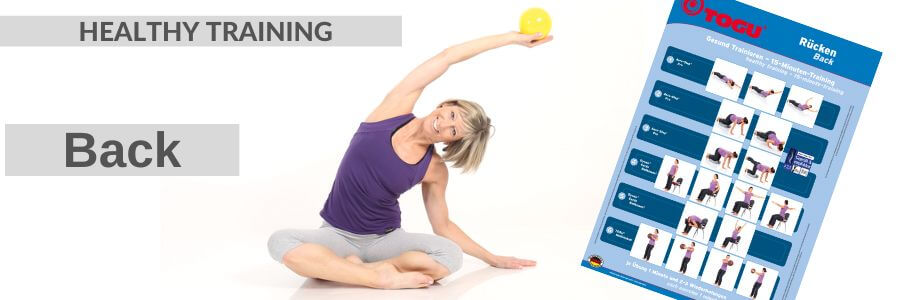Causes of back pain
Back pain can occur for a variety of reasons and is often the result of a complex interaction of factors. A deeper understanding of these causes is crucial in order to take targeted action to prevent and relieve back pain. Here are some of the most common causes of back pain:
1. muscle tension: One of the most common causes of back pain is muscle tension. These can be caused by incorrect posture,
excessive strain or stress. The muscles in the back become overworked and send out pain signals.
2. herniated discs: A herniated disc occurs when the soft core of a disc leaks between the vertebrae and presses on the surrounding
nerves. This can cause severe pain and numbness in the affected area.
3. arthritis: arthritic conditions such as osteoarthritis and rheumatoid arthritis can affect the joints and spine and lead to chronic
back pain.
4. incorrect posture and poor ergonomics: excessive sitting, especially in poor posture, can strain the back. This also applies
to poorly adapted office chairs and workplaces.
5. lack of physical activity: an inactive lifestyle can weaken the muscles in the back and reduce flexibility, which in turn can lead
to pain.
Knowing these potential causes is the first step in pain management and prevention. An individualised approach to back pain management can be based on identifying the specific cause and include targeted interventions to improve back health.
How can back exercise help with back pain?
Back exercise is an extremely effective way to relieve and prevent back pain. It aims to improve the strength, flexibility and endurance of the back muscles while stabilising the spine. Here are some of the ways back exercise can help with back pain:
· Strengthening the back muscles
· Improve flexibility
· Improving the stability of the spine
· Preventing recurrence of pain through strengthened muscles
However, it is important to note that not every exercise is suitable for everyone. Before you start a back workout, you should talk to a doctor or physiotherapist to make sure the exercises you choose fit your individual needs. A tailored exercise plan can help you achieve the best results in relieving back pain and improving your back health.
Effective back exercises with exercise equipment
Incorporating equipment into your back workout can make it more effective and versatile. Here are some ways you can incorporate equipment into your back workout:
· Exercise ball: an exercise ball can be used for a variety of exercises to improve stability and balance. For example, you can lie
on the ball and do back extension exercises to strengthen the lower back muscles.
· Theraband or resistance bands: These bands offer variable resistance levels and can be used for exercises such as shoulder blade
pulling or resistance rowing to strengthen the back muscles.
· Ball pillows: Ball cushions are versatile back training aids, promote stability and posture due to their unstable seating surface and
are particularly suitable for people with sedentary jobs.
· Balance Boards: Balance boards intensify back training and promote coordination due to their unstable surface. They activate the
torso muscles and help prevent back pain.
· Yoga mat: A soft surface such as a yoga mat is important to comfortably perform floor exercises that promote flexibility and
stability of the spine.
Before incorporating equipment into your back training, it is important to learn the correct technique to avoid injury. It is advisable to get professional guidance from a fitness trainer or physiotherapist to ensure that you are using the equipment correctly and that the workout is tailored to your individual needs.
Frequently asked questions about back exercises
What exercises are specifically for strengthening the lower back in back exercise?
In back exercises for the lower back, exercises such as leg raises and lower back extensions are particularly effective for strengthening this region.
Can back exercises help with lower back pain at night?
Yes, targeted back exercises can strengthen the muscles in the lower back and improve circulation, which can help relieve night-time pain.
How often should I do lower back exercises to get effective results?
Regular exercise two to three times a week can help to effectively strengthen the back muscles and reduce night-time lower back pain.
Is special equipment required to do lower back exercises?
Special equipment is not essential, but it can enhance the workout. Some exercises can be made more effective with aids such as exercise balls or therabands.
What role does posture play in lower back pain?
Poor posture can contribute to lower back pain. Back exercises help to correct posture and reduce the strain on the spine.
Can I do back exercises at home?
Yes, many back exercises can be done comfortably at home. However, it is important to learn the correct technique to avoid injury.
















